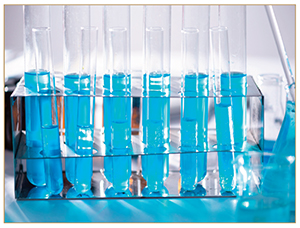Issue:April 2021
BIOSIMILAR DEVELOPMENT - Guidance on Biosimilar Interchangeability: The Debate Over Drug Delivery Devices
INTRODUCTION
In 2019, the US FDA issued its final guidance document titled Considerations in Demonstrating Interchangeability with a Reference Product.1 The guidance document details the pathway for how biosimilar products may be deemed “interchangeable” and substituted for the reference biologic without the intervention of a clinical prescriber.
As early experience in following this guidance has matured over the past year or two, a number of issues have arisen that may impede best available outcomes for patients, one of which is the question of whether “interchangeability” guidance may stifle innovation (and therefore improved patient experience) in drug delivery devices.

Before looking at the US situation, it is interesting to note some differences when compared with Europe. EU guidance on interchangeability separates the drug from the delivery device, specifically making way for device innovation: “Some differences may be allowed if they have no effect on safety and efficacy – for example differences in the formulation of the medicine, presentation and administration device.”2 This is significant, because delivery device usability and comfort for therapies that require frequent administration can offer competitive advantage, either to biosimilar producers trying to gain market share, or original biologics companies seeking to retain their market position. Evidence for this assertion may be seen in a number of pharma companies that have for some years been making moves to seek exclusive arrangements with device manufacturers to gain competitive edge in the switching/retention process.3 Certainly, in Europe, with its regime that separates drug from delivery device, the EU has approved more biosimilars for each reference biologic than the US – almost across the board.4
Whatever the significance of such comparisons, however, this short article plays out the situation and seeks to stimulate discussion and feedback from readers.
REGULATORY GUIDING PRINCIPLES
One of the FDA’s guiding principles is to enable the availability of best therapies and facilitate the best patient outcomes. While the larger part of the FDA guidance focuses on matters of medical therapeutic science, “human factors” have in recent years become an equally important consideration – including a focus on drug delivery devices that ease discomfort, avoid pain, and facilitate dosage accuracy. The enhanced importance of these aspects (“human factors”) is exemplified in the FDA’s guidance that recommends involving patients as early as possible in the clinical evaluation of new products – precisely to embrace human factors (ease of use, pain avoidance, etc) and the total patient experience.5 One would therefore hope that guidance on the interchangeability of biological drugs and biosimilars would encourage the use of alternatives to the original (“reference”) biologic that are at least the same, if not better. Moreover, the room for improvement may be applied equally to the delivery device as the drug itself.
DRUG DELIVERY SPECIFICS
What, then, does the FDA guidance on interchangeability say, especially with respect to drug delivery devices? The guidance document states that, “FDA expects that sponsors will submit data and information to support a showing that the proposed interchangeable product can be expected to produce the same clinical result as the reference product in all of the reference product’s licensed conditions of use.”6 This clearly focuses on the clinical outcomes – after all, in scientific terms, a biosimilar is not the same drug, but it does offer the same therapeutic benefit.
The purpose of interchangeability is to allow a biosimilar to be substituted for a reference (original) biologic by a pharmacist, without reference to the prescribing clinician. According to the Biologics Price Competition and Innovation Act (BPCIA) in the US, a biosimilar can be designated as “interchangeable,” whereby it may be substituted for the reference product without the intervention of the healthcare provider who prescribed the reference product.7 However, the rules vary from jurisdiction to jurisdiction, and international harmonization of interchangeability policies has some way to go.
Further to the demonstration of interchangeability from the perspective of biosimilarity, there are additional considerations for demonstrating interchangeability for a combination product that includes a device constituent part (eg, a container closure system such as a safety syringe or an autoinjector) to deliver the biological product. This is pertinent for manufacturers of combination products and contract manufacturers of medical devices that produce integrated drug delivery devices on behalf of clients (pharmaceutical companies) who incorporate them into a final combination product.
ANOMALIES IN PRACTICE
The guidance document includes a section on considerations for the container closure system or any device constituent. While not proscriptive, it contains enough pointers to identify inputs, such as performance testing, stability studies, shelf-life testing, useability, and risk management, for sponsors to prepare an approach that can be discussed and agreed with the FDA at the beginning of the design phases.
Here is where we encounter a little confusion and potential conflict with patient best interests. The guidance first of all seems to limit device improvement potential when it states that “A sponsor developing an interchangeable product generally should not seek licensure for a presentation for which the reference product is not licensed. For example, if the reference product is only marketed in a vial and a prefilled syringe, a sponsor should not seek licensure for the proposed interchangeable product for a different presentation, such as an auto-injector.”8
However, this is immediately followed by apparent encouragement to potentially seek delivery device enhancements or improvements (which could benefit the patient and provide commercial competitive edge). This guidance reads:
“However, if a sponsor is considering the development of a presentation for which the reference product is not licensed, this should be discussed with the FDA. In such cases, the FDA will evaluate whether the proposed presentation could support a demonstration of interchangeability.” Early interaction is clearly essential, as the guidance notes: “Sponsors are encouraged to contact the FDA early during product development to discuss the proposed presentation [delivery device] and specific considerations related to licensure of the proposed product as an interchangeable under section 351(k) of the PHS Act.”9
PIONEERS VERSUS FOLLOWERS
So where does this leave the issue? Because of the multitude of different products and presentations, what is not clear – and will be the challenge for sponsors – is the line between “similar and not-similar.” As the guidance advises, the solution to this is to engage with the FDA early in development and agree a route forward.
The probable result, until the market’s experience proves otherwise, is that sponsors (pharma companies) will split into “pioneers” and “followers.” At Owen Mumford, we know that pioneers exist, because we’re already working with some of them on enhanced device “presentations” for biosimilar drugs to propose to the FDA. These biosimilar companies clearly recognize that device enhancements can offer patient experience benefits and, at the same time, provide an element of competitive edge to encourage switching. There is certainly a discussion emerging in the wider biologics industry over whether biosimilars and device improvements can more easily be introduced for naïve patients.10
Nevertheless, the issue remains over whether current guidance may suppress device innovation – innovation that is to the patient’s benefit. Particularly with combination products that incorporate a device-constituent, we can see a scenario of sponsors “playing it safe” and adhering very closely to the design of the reference product. This, of course, would stifle a body of innovation: why introduce features into the proposed product that are not present in the reference product, when it may increase the risk around gaining approval and require more work to demonstrate that the proposed product is interchangeable? However, if those features are shown to be improvements over the reference product or have been introduced to address on-market issues, then this should be seen as a “positive difference” that adds benefit and ought to be encouraged by the FDA.
SUMMARY
In short, then, clarity around the issue is likely to develop rapidly over the next couple of years as the biosimilars “pioneers” bring device developments in front of the FDA for approval. A positive outcome from those consultations and applications is important to fulfil the FDA’s objective of increasing patients’ access to therapies with the greatest “safety, efficacy, and security” available.11 As an industry, we should encourage this discussion to make sure that developmental debate is completed with the minimum of delay.
REFERENCES
- FDA, Considerations in Demonstrating Interchangeability With a Reference Product, May 2019.
- European Medicines Agency, Guidance, Biosimilars in the EU, 2019.
- In-pharma Technologist, Pharma turning to injectable systems to protect biologics, 22 Jun 2015.
- Biosimilars Council, Lessons for the United States from Europe’s Biosimilars Experience, June 2020.
- Center for Devices and Radiological Health (CDRH) and Center for Biologics Evaluation and Research (CBER), Patient Engagement in the Design and Conduct of Medical Device Clinical Investigations, 24 Sep.
- FDA, Considerations in Demonstrating Interchangeability With a Reference Product, May 2019.
- FDA, Implementation of the Biologics Price Competition and Innovation Act of 2009, 12 Feb 2016.
- FDA, Considerations in Demonstrating Interchangeability With a Reference Product, May 2019.
- Ibid.
- Biosimilar Development, Could naïve patients be the key to US biosimilar success, 26 Sep 2019.
- FDA, What we do, 28 Mar 2018; European Pharmaceutical Review, Medical device design – a key consideration when entering biosimilars market, 25 Nov 2019.
To view this issue and all back issues online, please visit www.drug-dev.com.

Darren Mansell is a Regulatory Affairs Manager with Owen Mumford Pharmaceutical Services, where he has worked for over 14 years and is integral in ensuring products meet regulatory requirements to facilitate compliance and sales in worldwide markets. He works in a cross-functional team with colleagues from Operations, R&D, and sales teams to deliver new and existing drug delivery and diagnostic products to customers.
Total Page Views: 4090










